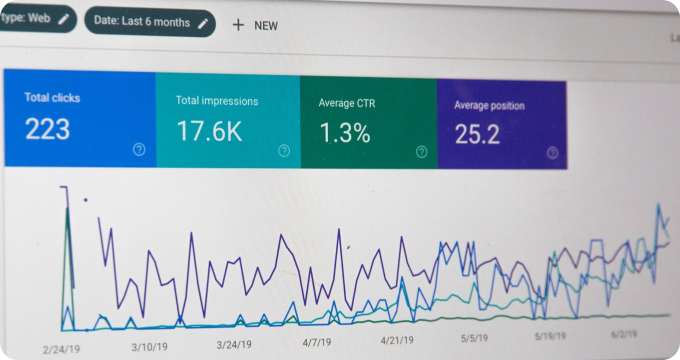6 Things I Wish I'd Known About Licensing Management Software Before Implementing One
- November 30, 2023
- 3 minutes
As extraordinary as it might sound, the decision to implement Licensing Management Software (LMS) is not one to be taken lightly. If I may draw from the wisdom of the great Greek philosopher Plato, who famously said, “The measure of a man is what he does with power,” I would argue that the measure of a business is what it does with its software licenses. LMS is an intricate tool that can shape the destiny of an organization; a double-edged sword that, if handled carelessly, can lead to mismanagement, legal entanglements, and financial ruin.
1. Understanding Software Licensing
The first step is to understand what software licensing is. Licenses are legal contracts that stipulate how and where a specific software can be used. They are the pivot on which software usage revolves, defining the parameters of usage, be it the number of users, the duration of use, the geographical location, and so forth. In legal parlance, the absence of a valid license can potentially constitute copyright infringement. Therefore, managing these licenses is crucial to ensure compliance and avoid hefty penalties.
2. The Complexity of License Management
License management is not as simple as it seems. This realization dawned on me rather late. The intricacy of the task lies in the diversity of licenses - from single-user licenses, volume licenses, to site licenses, each with its own unique requirements and stipulations. Adding to the complexity is the fact that licenses are not static. They are dynamic and change with software upgrades, versions, and business requirements. To navigate this labyrinth without a robust LMS is akin to sailing without a compass.
3. Selecting the Right Licensing Management Software
Not all LMS are created equal. There are several factors to consider when choosing one. Critical among them is scalability. The LMS must be able to accommodate the growth of the organization and the corresponding increase in software usage. The more advanced LMS can track usage, detect idle licenses, and automatically manage renewals, thereby preventing wastage and optimizing resource allocation. This kind of quantitative analysis, reminiscent of Bernoulli’s law of large numbers, relies on the premise that with increased usage data, the accuracy of prediction improves, leading to more efficient license management.
4. The Role of Audit Trails
Audit trails in LMS play a significant role in ensuring compliance. They provide a record of each user's activity, thus enabling traceability and accountability. Similarly, the Pareto principle, or the 80/20 rule, is quite applicable in this context. The principle postulates that 80% of consequences come from 20% of the causes. In terms of LMS, a significant majority of license compliance problems can often be traced back to a minority of users or licenses. Audit trails can help identify these problem areas and rectify them before they escalate into major issues.
5. The Cost Implication of LMS
The economic implications of LMS cannot be overemphasized. While the initial cost of implementation may seem high, the long-term savings are substantial. It is comparable to the economic concept of sunk cost vs. opportunity cost. The upfront cost of implementing LMS, although substantial, should be regarded as a sunk cost, necessary for the realization of potential future savings - the opportunity cost. Without effective license management, organizations run the risk of overspending on unnecessary licenses or facing fines for non-compliance, both of which can be avoided with a robust LMS.
6. Training and Continuous Improvement
Lastly, I wish I'd known about the importance of training and continuous improvement in LMS implementation. An LMS is only as effective as the people who use it. Training ensures that users are well-versed with the nuances of the LMS, thereby reducing the risk of misuse and non-compliance. Additionally, continuous improvement is key to adapting to changing business requirements and technological advancements. Through a process similar to the scientific method—observe, hypothesize, test, analyze—organizations can continually refine their LMS, ensuring it remains effective and efficient.
In conclusion, the implementation of Licensing Management Software is not a casual affair but a strategic decision that requires deep understanding, careful planning, and continuous refinement. It's a step into a world where law, technology, and economics intersect, a place where the wise harness the power of software licenses to steer their organizations towards growth and success.
Learn More
Unleash the full potential of your business by diving deeper into our blog posts that unravel the world of licensing management software. For an unbiased, comprehensive view, they are encouraged to explore our rankings of Top Licensing Management Software.
Popular Posts
-
 Licensing Management Software Industry Report: Unveiling Key Findings and Crucial Insights
Licensing Management Software Industry Report: Unveiling Key Findings and Crucial Insights
-
 How to Strategically Budget for Licensing Management Software in Your Business
How to Strategically Budget for Licensing Management Software in Your Business
-
 6 Things I Wish I'd Known About Licensing Management Software Before Implementing One
6 Things I Wish I'd Known About Licensing Management Software Before Implementing One
-
 How to Hire the Right Licensing Management Software Provider
How to Hire the Right Licensing Management Software Provider
-
 Ask These Questions to a Licensing Management Software Provider to Choose the Right One for Your Business
Ask These Questions to a Licensing Management Software Provider to Choose the Right One for Your Business






